| We camped at Bonito campground, a National Forest site
about 12 miles north of (and 1000ft higher than) Flagstaff, on one of the
roads to the Grand Canyon. We don't usually stay in National Forest
campgrounds because they rarely have electricity or any other facilities.
Whilst they are otherwise very good, we prefer a few amenities. At these
altitudes the ponderosa pines are much in evidence. | 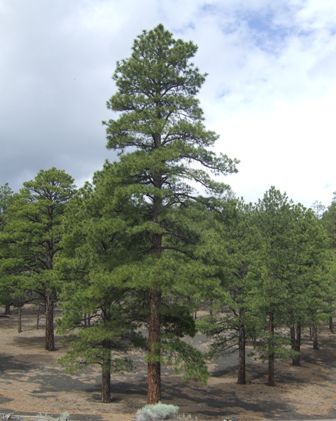 |
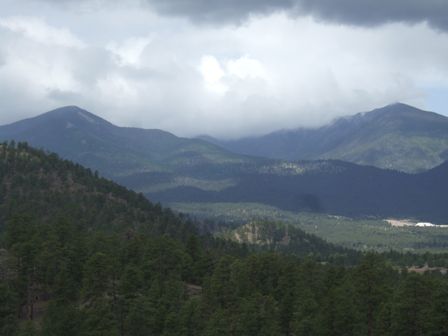 |
Just up the hill is Sunset Crater which gives the park its name. This is a
cinder cone volcano which is thought to have been created in 1064AD. Sadly
it is very fragile and people are no longer allowed to climb it. We climbed
the older, smaller (90m) Lenox cone which was still hard work. This is the
view of the San Francisco peaks from the top. The rainy season is coming and
the clouds are beginning to form. We even had brief overnight rain. |
| There is a walkway past some lava flows showing the
different types. This is a squeeze-up where the cooling lava has cracked and
been forced up by fresh flows from underneath. | 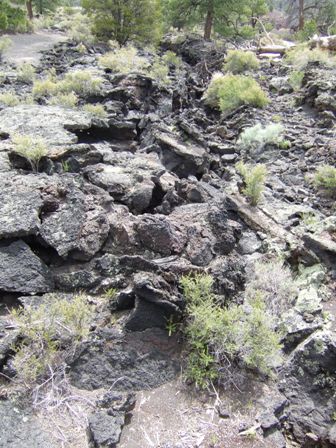 |
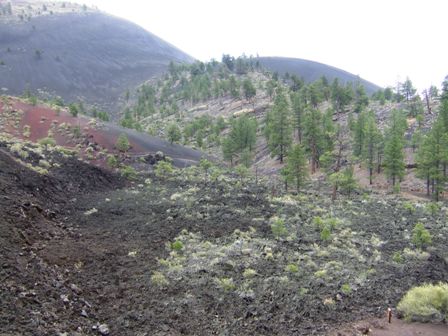 |
The pines are slowly recolonizing the slopes of Sunset Cone. It has taken
1000 years for enough soil to support the trees to be created within the ash
and lava. |
| Some 18 miles up the road is Wukoki pueblo where
people lived after the volcano covered where they had been living with ash.
This is quite a structure with multiple levels and a wonderful view over the
valleys. | 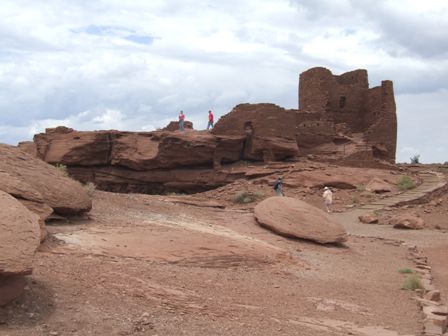 |
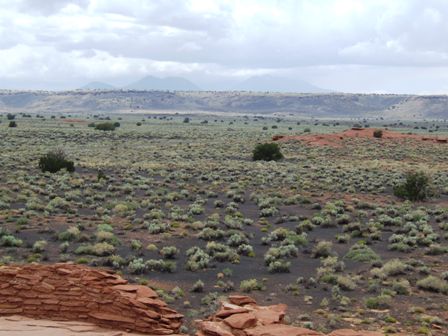 |
Well, it's a view, I'm not so sure about the wonderful. Farming here must
have been really difficult. Today little grows except scrub and the soil is
still largely ash. |
| Another site of pueblo remains at Wupatki is only a
few miles away. This dates from a similar period but was more prosperous and
is thus larger. | 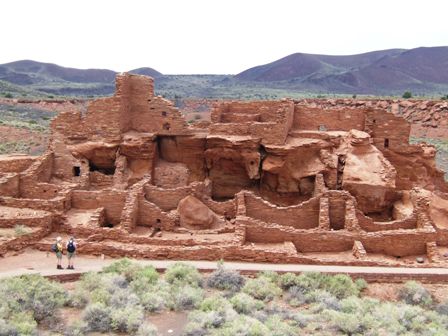 |
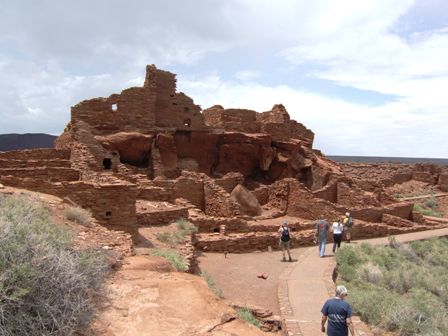 |
Again you have the multi storey complex which we have seen at several sites
north and south of the border. However, unlike the more southerly ones, this
complex was built of stone taken from the surrounding area. The people who
lived here are thought to have been Hopi and/or Zuni tribes which today live
on the mesas just to the south of here. |
| This is a ballcourt which was excavated and stabilised
in 1965. They were common in the area from 800-1200AD. Over 200 have been
found in Arizona and their use is thought to have been important for social
and economic reasons. The games are believed to have been brought north from
Mexico by the Hohokum who settled more towards Phoenix. | 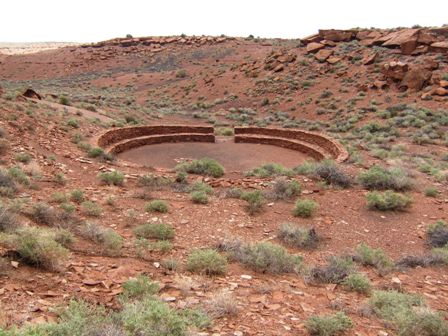 |
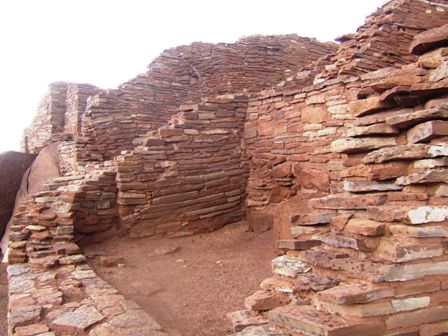 |
The stone construction has stood the test of time well and many walls still
remain. The thick walls would have provided good insulation in both summer
and winter. |
| Even in June there are remnants of snow on the
mountaintops, a reminder that even this far south it can get very cold in
the winter. | 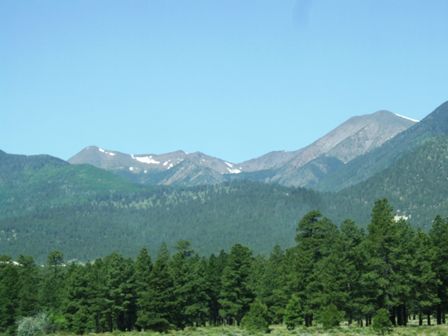 |
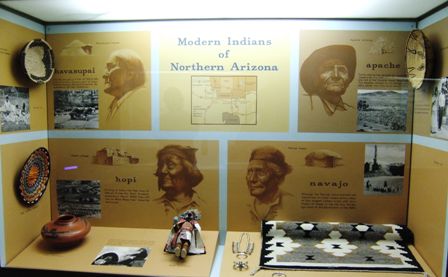 |
We also visited Walnut Canyon just to the east of Flagstaff. This is another
national monument site which this weekend was free to all visitors and so
was quite crowded. But we arrived early and found a parking spot for the RV.
The visitor centre had a nice little exhibition with information on the
local tribes. |
| The 1.6 mile walk is paved but the reverse way round
to usual. There are over 300 steps DOWN. So coming back up is really hard
work. They do warn you before you start out. Here we have alternating
layers of rock and people lived under the overhangs much as at Mesa Verde. | 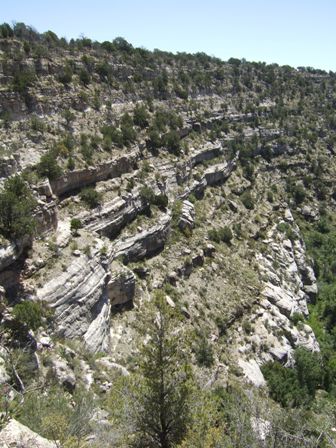 |
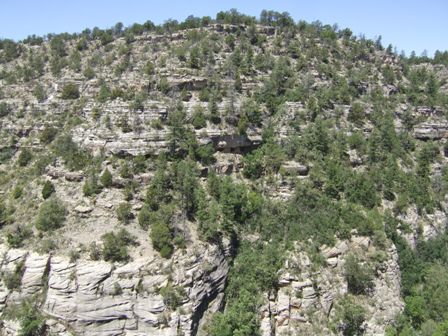 |
There is quite different plant life on the north and the south sides of the
canyon. The north side is very dry and so has desert type plants, the south
side is more shaded and so retains more moisture enabling different plants
to thrive. |
| Under many of the overhangs there are the remnants of
habitation although how people got to them is not obvious. | 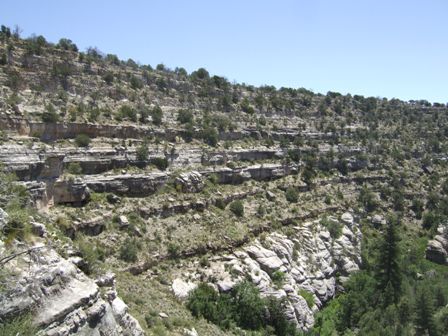 |
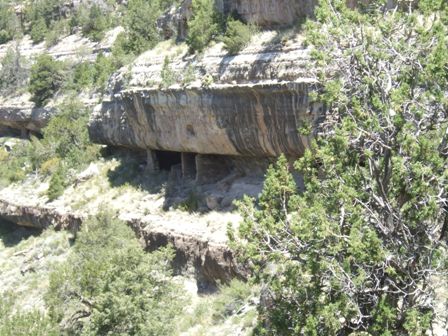 |
Since the floor, the roof, and the back wall were already built, it was
fairly easy to build a place to live and its inaccessibility made it a safe
place to be. |
| The patterns in the rock record changing wind
directions over the millenia. | 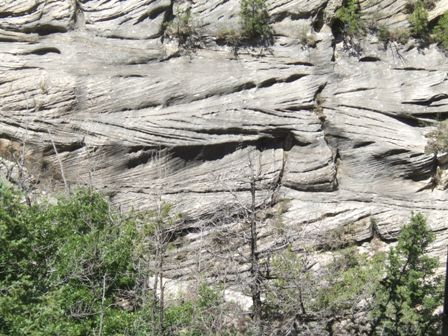 |
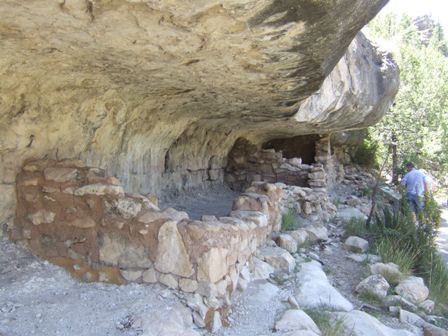 |
Several families would have lived and worked together along this platform.
Other rooms would have been added as the family grew. |
| There is evidence of these rooms having been rebuilt
several times over the period of their use. | 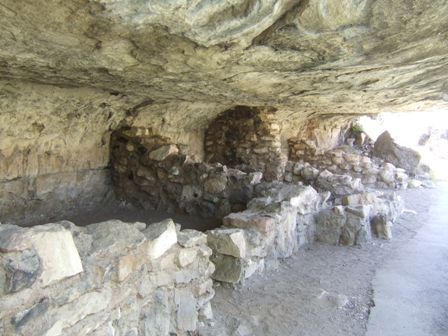 |
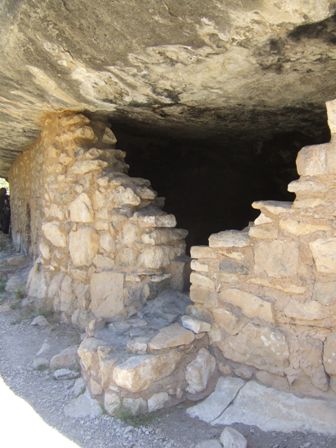 |
Some of the rooms have been partially reconstructed showing how the
occupants would have been protected from the elements. |
| We returned to Flagstaff for lunch and parked
alongside the railway. Most US towns are conscious of the number of RV
visitors they get and so provide parking facilities for them. This is the
railway station. We never seem to get far from the railway in the US.
Passenger traffic probably doesn't exist here although there may be an odd
daily train since this is the main BNSF line. | 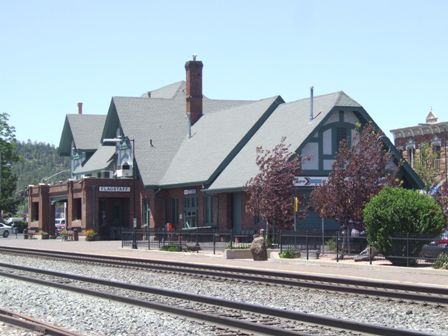 |
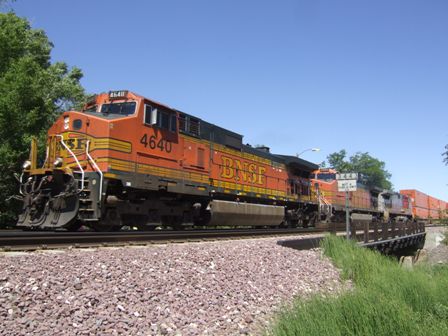 |
Even on a Sunday the trains rattle through with 3-8 locomotives on the front
and up to 118 double stacked container wagons behind. |
We finally travelled the 150 miles south back to Phoenix where we cleaned and
emptied the RV. It will stay with friends over the summer until we return next
spring. We fly home in a day or two to London and then on to Bordeaux. Watch for
the 2010 trip when we hope to visit Alaska. |